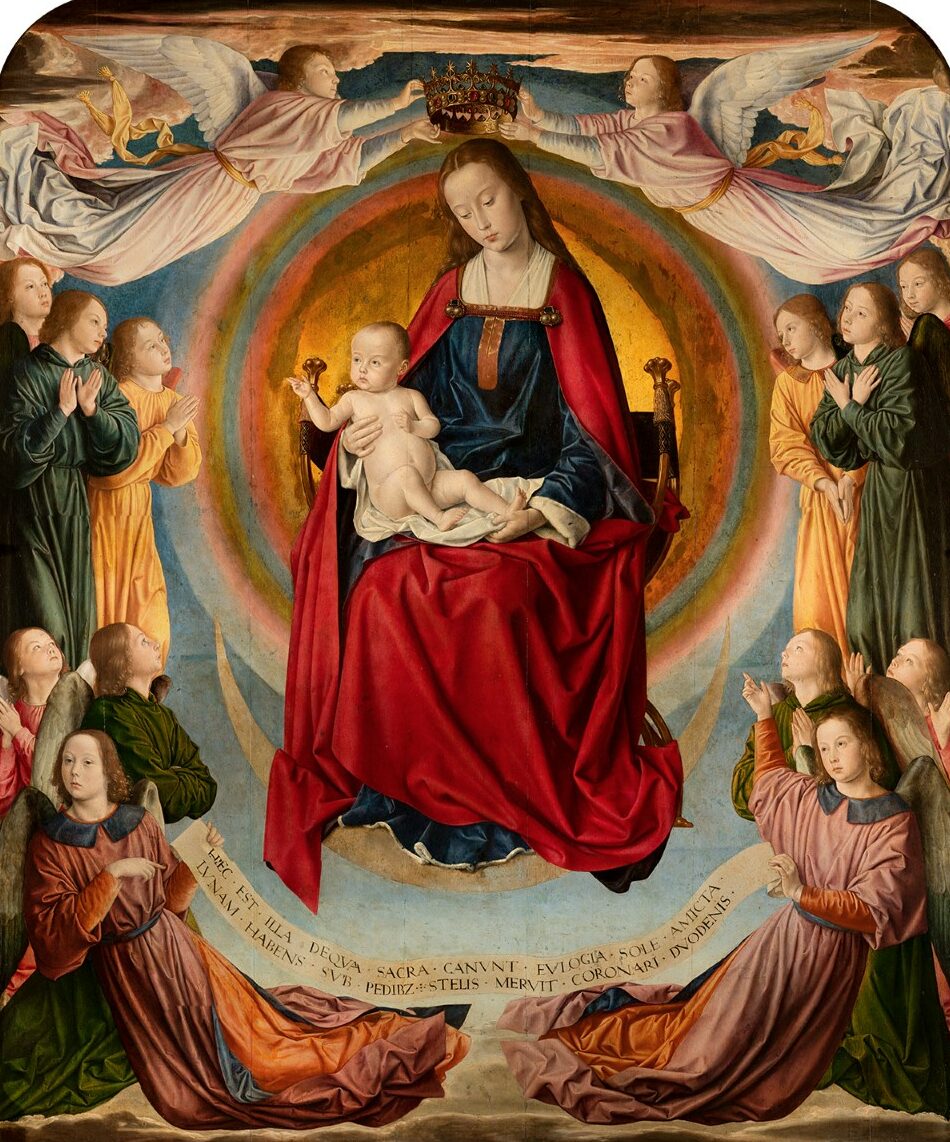
By Catherine Wilkinson
Oil on panel, attributed to Jean Hey © Arcanes
This Osiris case study details The Triptych of the Virgin in Glory that was commissioned by Pierre II of Bourbon and his wife Anne de Beaujeu between 1500 and 1501 to adorn the chapel of the Cathedral of Moulins.
Attribution of the triptych was discussed at length, but we can now attribute the work with almost complete certainty to the hand of Jean Hey.
The central panel shows the Virgin on a throne surrounded by angels while holding the Child on her knees. In the upper part, two angels carry a crown of stars above the head of the Virgin while six others, three on each side of the throne, look at her. In the lower part two angels hold a Latin inscription from Revelation XII “Hec est illa deqva sacra canvnt evlogia sole amicta lvnam habens svb pedibz stelis mervit coronari dvodenis”, which can be roughly translated as “This is the one praised in the Holy Scriptures: enveloped in the sun, having the moon under her feet, she deserved to be crowned with twelve stars”. The Virgin is dressed in a heavy red mantle, typical of the Flemish Virgins, anticipating the Passion of Christ.
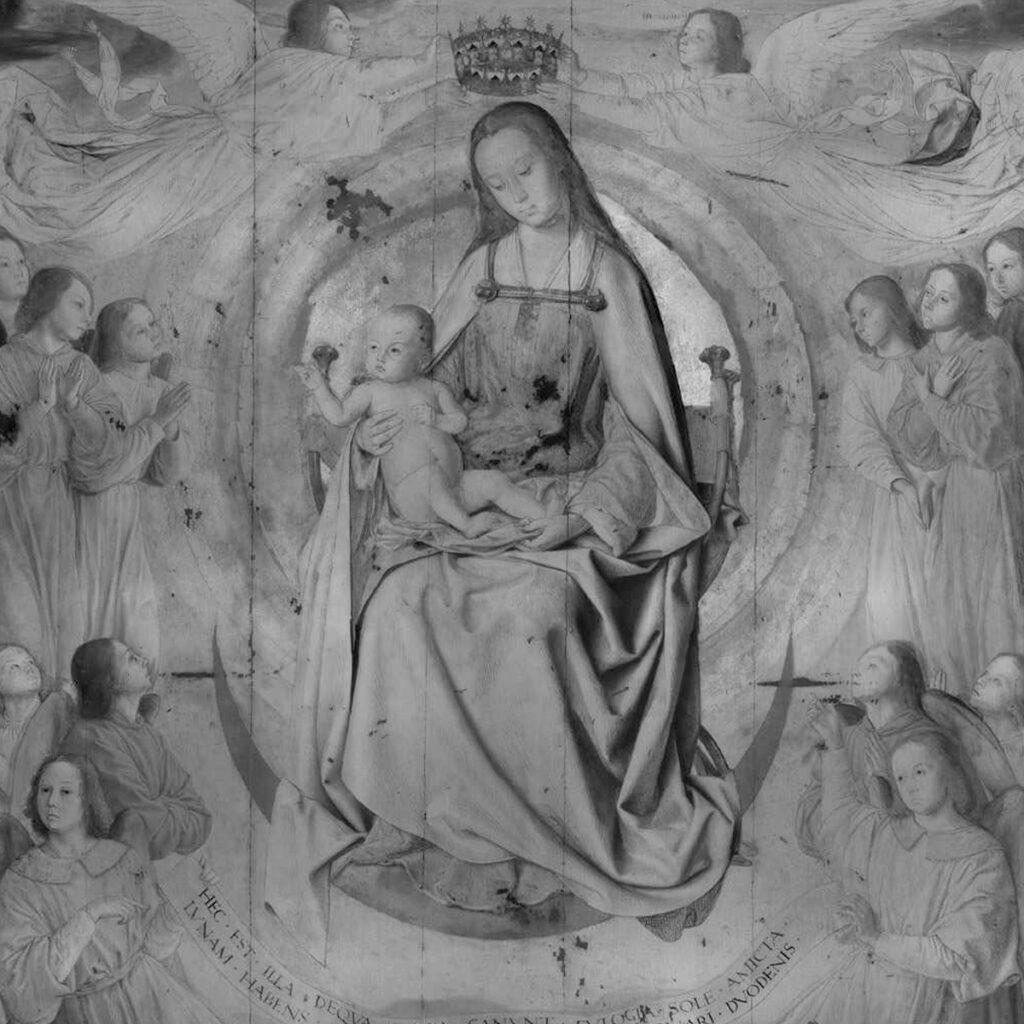
The left pane (below) represents Pierre II with Saint Peter. The latter wears a cap adorned with embroidery and a tiara of rounded cabochons, transparent jewels and palmettes. Pierre II is kneeling in the foreground, he wears a red cloak and a tiara.
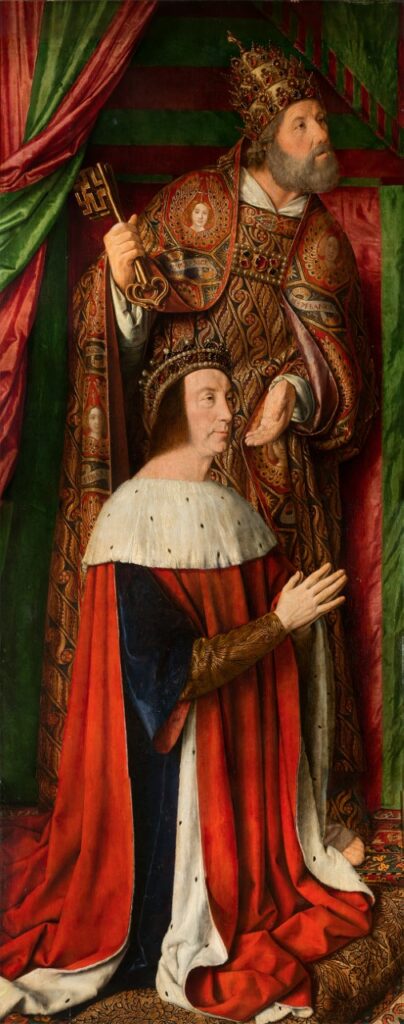
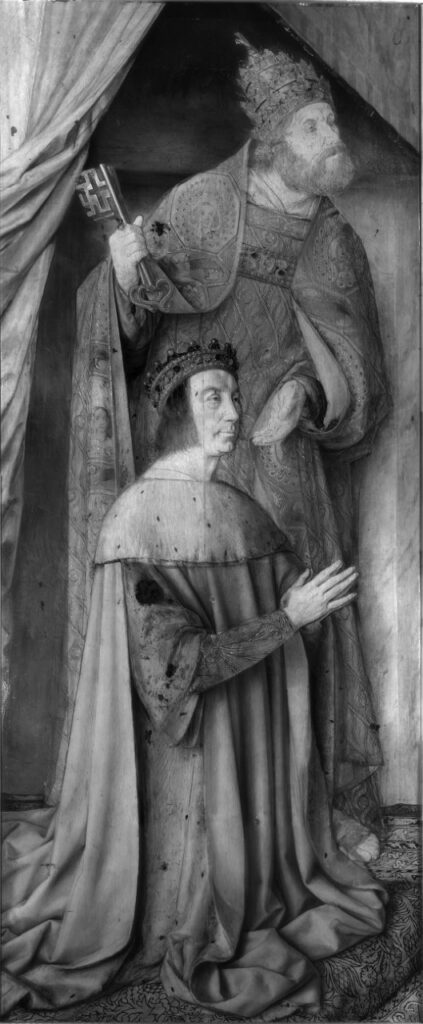
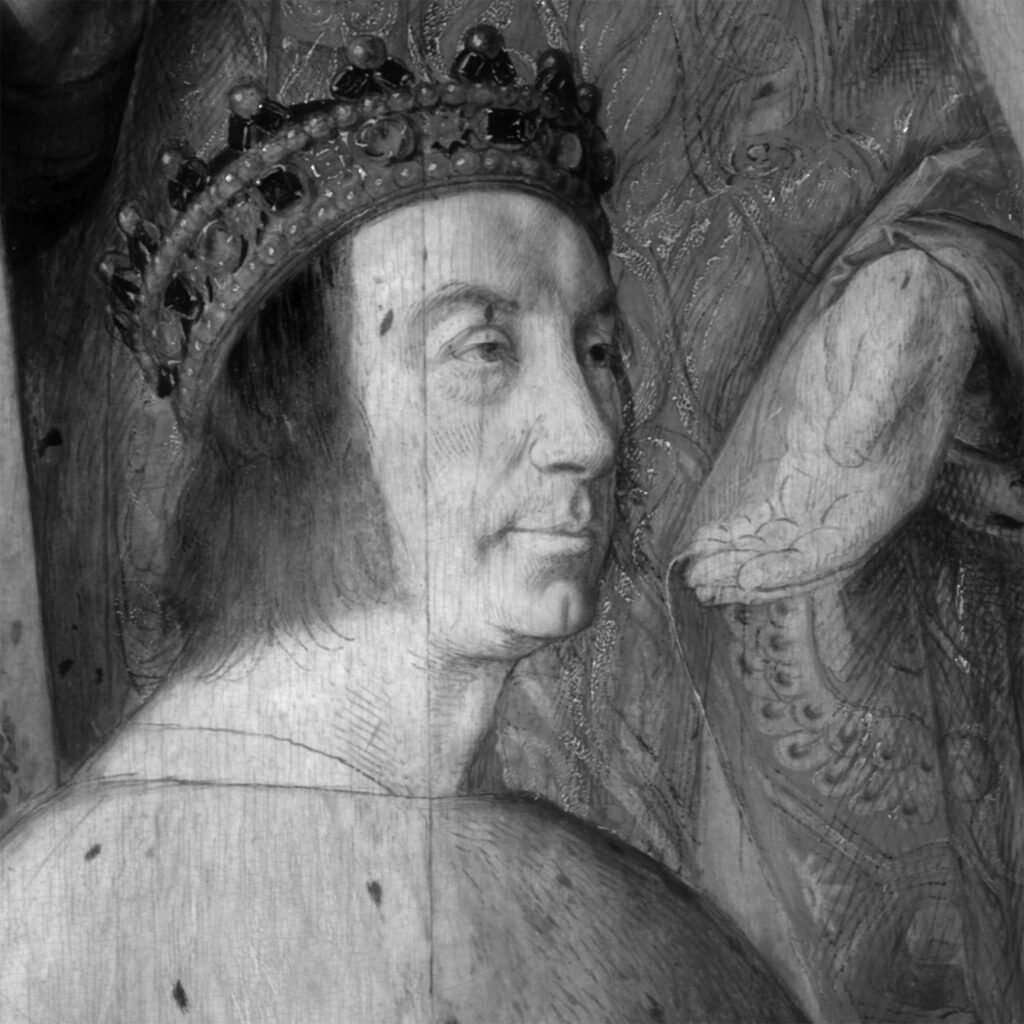
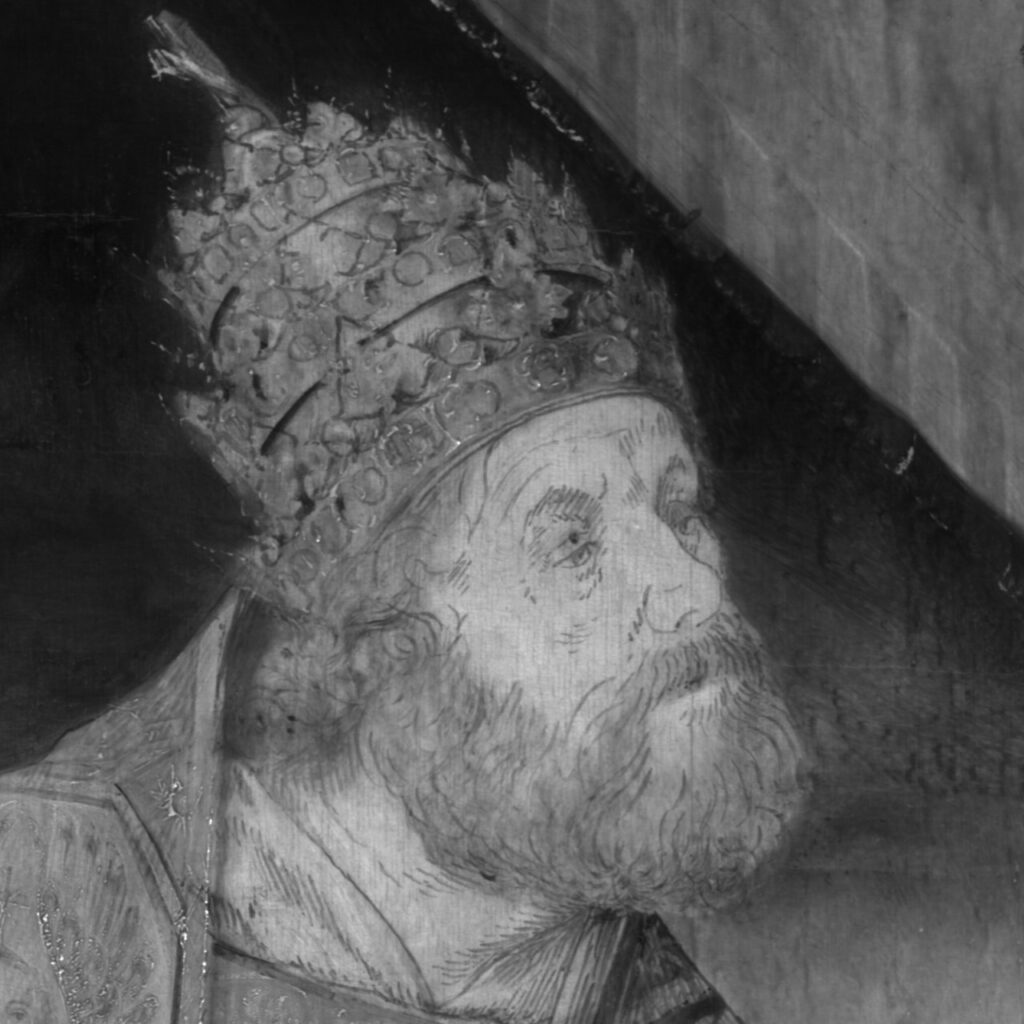
On the right panel (below), we see Anne de Beaujeu and her daughter Suzanne in prayer, accompanied by Saint Anne. Anne and Suzanne’s clothes are very rich, while Saint Anne wears a much more sober outfit.
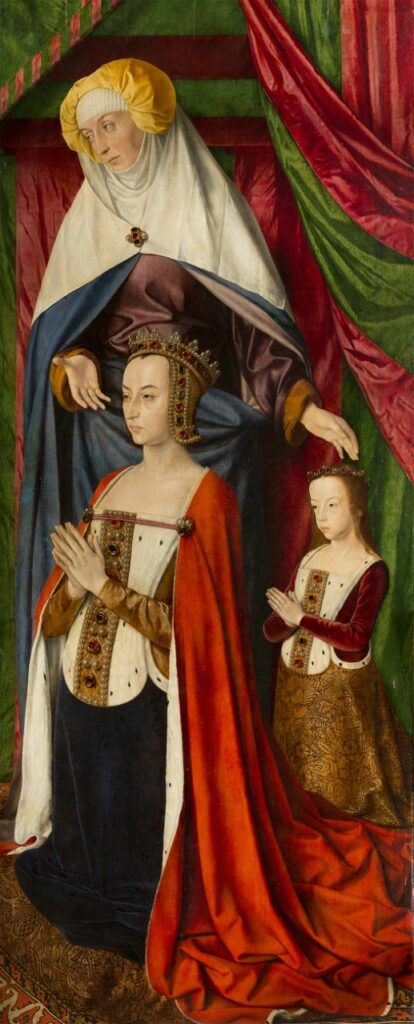
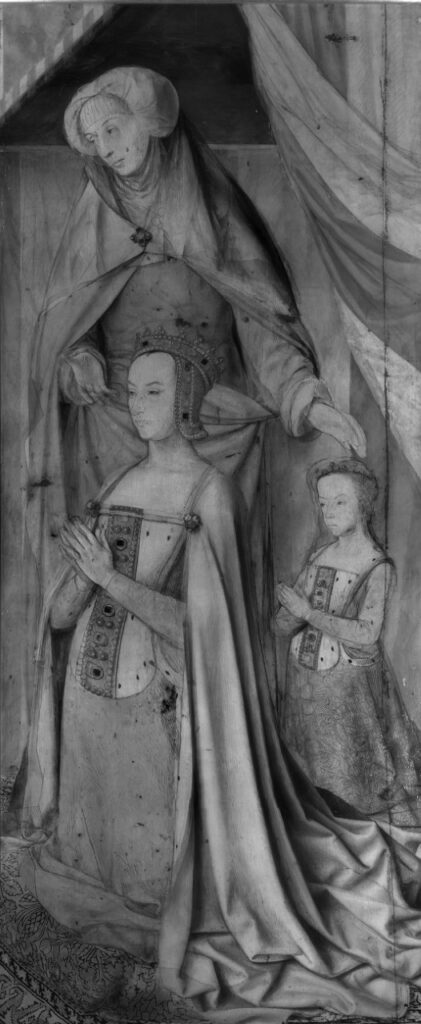
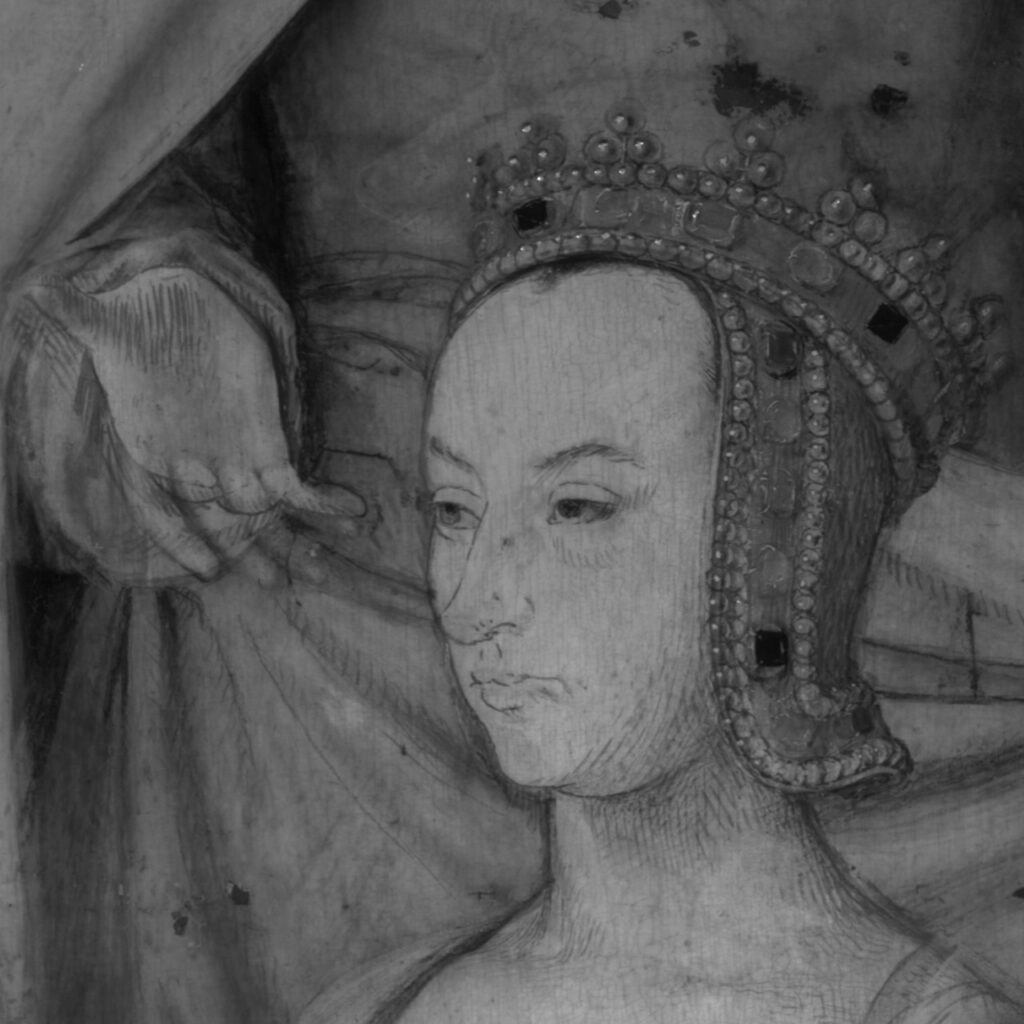
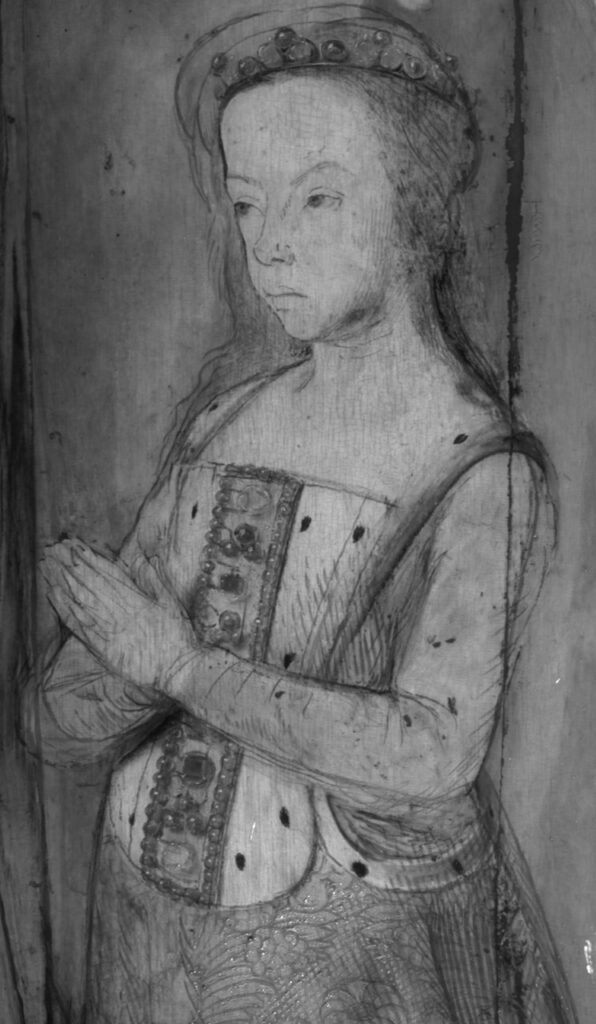
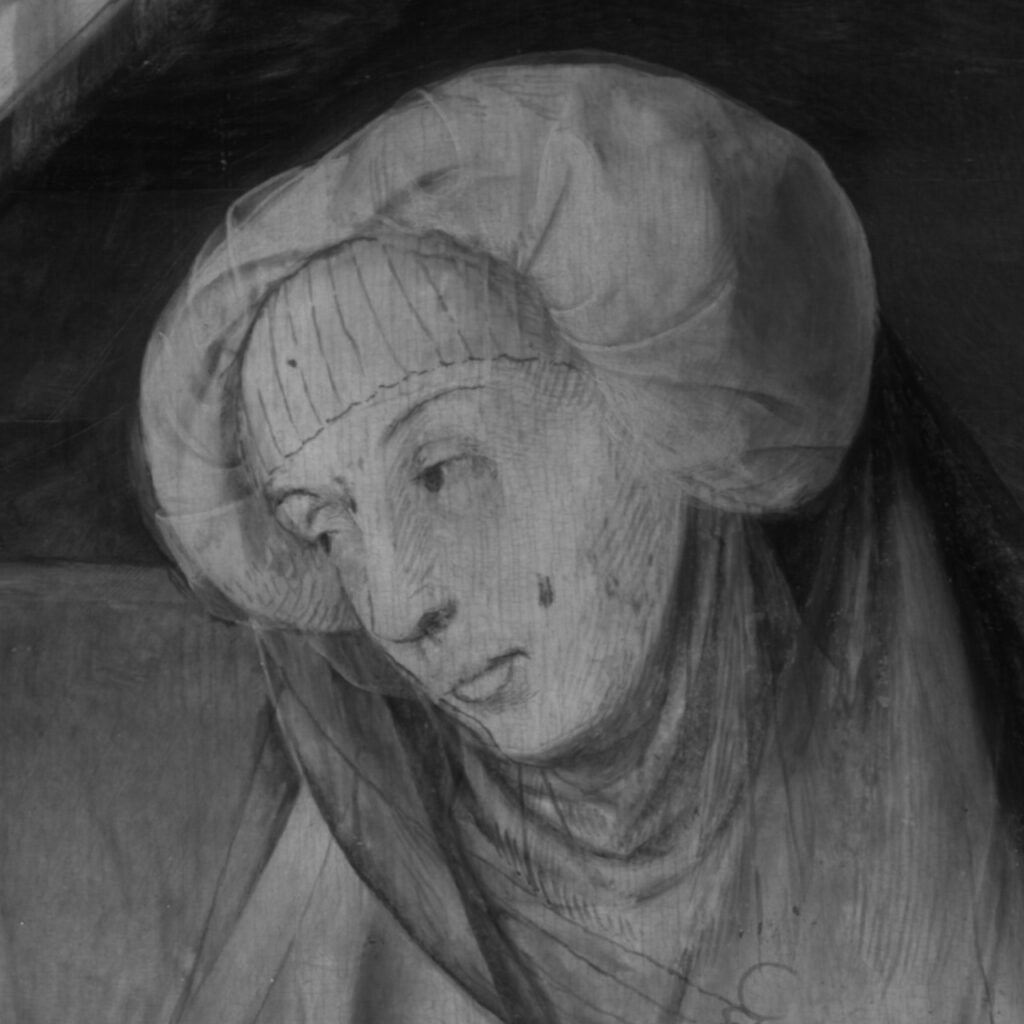
The underlying drawing of the Moulins triptych, very rich and complex, is a testimony to Jean Hey’s creative process.
In general, we note that the drawing varies according to the importance or the function of the element represented. On the left panel, the difference in treatment is very clear between Saint Peter and Pierre II of Bourbon. The latter is drawn with fairly fine and precise lines in charcoal or dry material, animated by a concern towards a faithful resemblance to the Duke. The hatching is subtle and suggests modelling. The features of Saint Peter, on the other hand, are more schematic. The design is done with a brush/pen with little indication of volumes. The artist is not being held to the concern of resemblance.
This is also valid for the schematic figures of the angels and of the Virgin in the central panel. Their design testifies to the reuse of workshop patterns/models, a common practice of the time. Although their positions differ, the similarities between the angels on the different panels seem to stem from the same idea. Comparisons with the Hey’s other paintings seem to confirm this.
In both panels, the faces of the donors appear to have been the subject of a precise preparatory drawing for the sake of realism. No pentimenti are observed in relation to the painted execution.
The face of Pierre II of Bourbon can be compared to the painting in the Louvre, Pierre II of Bourbon, presented by St Pierre, a portrait very similar in multiple ways: positioning, expression and haircut.
In the right panel, pentimenti are visible in the busts and arms of Anne and Suzanne. For the latter, the artist changed their position several times. There is also an important pentimento in the drapery of Saint Anne.
The infrared imagery system shows the predominant place of the underlying drawing in the final execution. The drawing deliberately shines under the coloured layers, particularly on the central panel, modelling the shadows in the painted phase. A striking example of it is the Child’s eyebrows in the central panel as well as the face of the angel at the left of the Virgin.
Thanks to Cinzia Pasquali of Arcanes for the images and write-up.